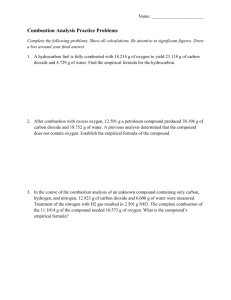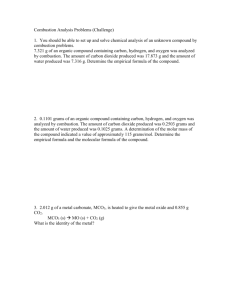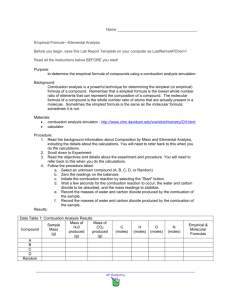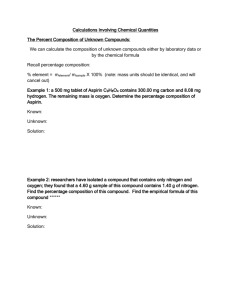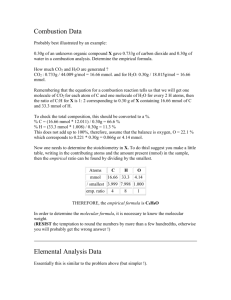Name Period ______ Date WS: Combustion Analysis 1. Capronic
advertisement
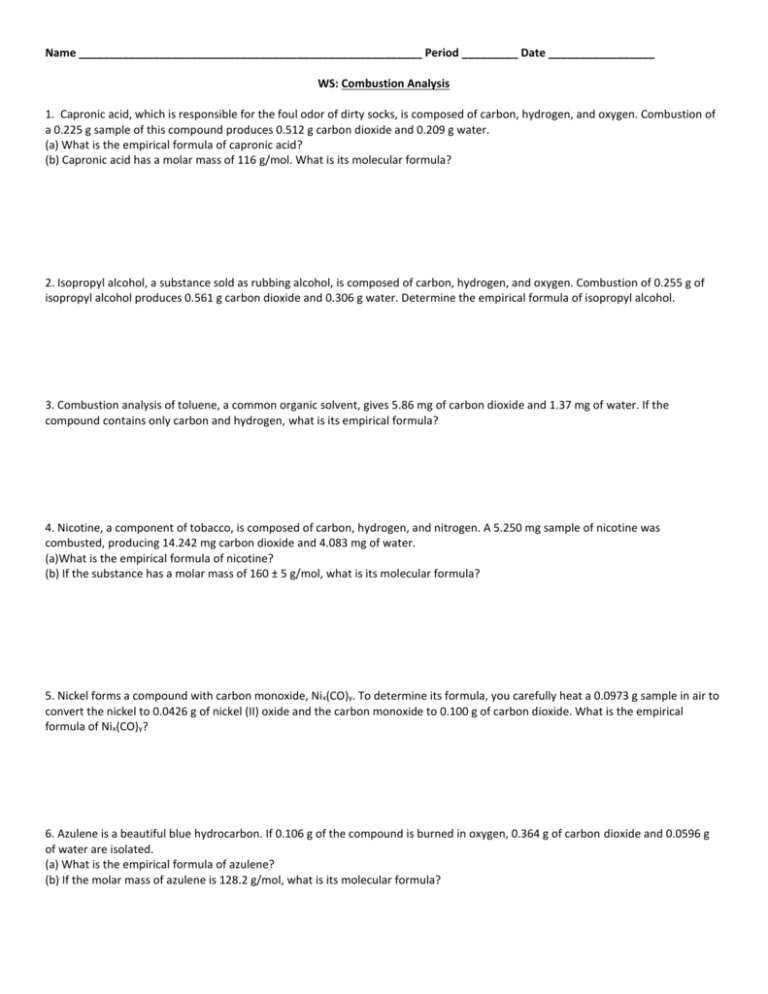
Name _______________________________________________________ Period _________ Date _________________ WS: Combustion Analysis 1. Capronic acid, which is responsible for the foul odor of dirty socks, is composed of carbon, hydrogen, and oxygen. Combustion of a 0.225 g sample of this compound produces 0.512 g carbon dioxide and 0.209 g water. (a) What is the empirical formula of capronic acid? (b) Capronic acid has a molar mass of 116 g/mol. What is its molecular formula? 2. Isopropyl alcohol, a substance sold as rubbing alcohol, is composed of carbon, hydrogen, and oxygen. Combustion of 0.255 g of isopropyl alcohol produces 0.561 g carbon dioxide and 0.306 g water. Determine the empirical formula of isopropyl alcohol. 3. Combustion analysis of toluene, a common organic solvent, gives 5.86 mg of carbon dioxide and 1.37 mg of water. If the compound contains only carbon and hydrogen, what is its empirical formula? 4. Nicotine, a component of tobacco, is composed of carbon, hydrogen, and nitrogen. A 5.250 mg sample of nicotine was combusted, producing 14.242 mg carbon dioxide and 4.083 mg of water. (a)What is the empirical formula of nicotine? (b) If the substance has a molar mass of 160 ± 5 g/mol, what is its molecular formula? 5. Nickel forms a compound with carbon monoxide, Nix(CO)y. To determine its formula, you carefully heat a 0.0973 g sample in air to convert the nickel to 0.0426 g of nickel (II) oxide and the carbon monoxide to 0.100 g of carbon dioxide. What is the empirical formula of Nix(CO)y? 6. Azulene is a beautiful blue hydrocarbon. If 0.106 g of the compound is burned in oxygen, 0.364 g of carbon dioxide and 0.0596 g of water are isolated. (a) What is the empirical formula of azulene? (b) If the molar mass of azulene is 128.2 g/mol, what is its molecular formula?
